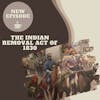Black Cemeteries (Listener Request)

This week's episode comes as the result of a listener request!
Someone asked me to review the history of black cemeteries in the United States. As Africans were imported to this country, their dead bodies were often discarded in undesirable locations of the property of those who claimed ownership of them. While their place of rest may have changed, the overall treatment of their remains remained questionable at best.
These historic burial plots have gone mostly unprotected and poorly maintained. Learn about what they are, how they came to be and why there is a push for their protection.
SOURCES:
Brown, DeNeen L. “Scientists Excavating Tulsa Race Massacre site unearth skeleton with bullet wounds.” June 26, 2021. The Washington Post. Accessed September 25, 2021. (LINK)
“Buffalo Soldiers: Legend and Legacy.” National Museum of African American History & Culture. Smithsonian. Accessed September 20, 2021. (LINK)
Halperin, E.C. (2007), The poor, the Black, and the marginalized as the source of cadavers in United States anatomical education. Clin. Anat., 20: 489-495. https://doi.org/10.1002/ca.20445
Libecap, Emily. Chronicle of African Americans in the Horse Industry n.d. “James Perkins.” International Museum of the Horse. Accessed September 21, 2021. (LINK)
Madani, Doha. “Possible mass grave from 1921 Tulsa Race Massacre found by researchers.” NBC News. Last updated December 17, 2019. Accessed September 24, 2021. (LINK)
Mark, Joshua J.. "Burial." World History Encyclopedia. Last modified September 02, 2009. (LINK)
McGreevy, Nora. “New Legislation Seeks to Protect the U.S.’ Historic Black Cemeteries.” December 29, 2020. Smithsonian Magazine. Smithsonian. Accessed September 18, 2021. (LINK)
McGreevy, Nora. “Florida Archeologists find 29 Unmarked Graves at Site of Razed Black Cemetery.” February 19, 2021. Smithsonian Magazine. Smithsonian. Accessed September 25, 2021. (LINK)
NNPA Newswire Correspondent. “Senate passes bill to create African American burial ground network.” Afro News. January 17, 2021. (LINK)
Smith, Ryan K. “A New Generation of Volunteers Are Rescuing Historic Black Cemeteries - And Black History.” November 17, 2020. Time Magazine Online. Time. Accessed September 18, 2021. (LINK)
Tucker, Emma & Laura Lyn. “Headstones in historic Black cemeteries were desecrated. The recovery offers ‘symbolic justice.’” Aug 24, 2021. CNN. Accessed September 21, 2021. (LINK)
The Black Cemetery Network. University of South Florida. (LINK)
U.S. Congress. House. African-American Burial Grounds Network Act. HR 1179. 116th Congress. 1st Introduced February 13, 2019. (LINK)
Support the show (http://www.buymeacoffee.com/civicscoffeepod)
Welcome to Civics and Coffee. My name is Alycia and I am a self-professed history nerd. Each week, I am going to chat about a topic on U.S history and give you both the highlights and occasionally break down some of the complexities in history; and share stories you may not remember learning in high school. All in the time it takes to enjoy a cup of coffee.
INTRO MUSIC
Hey there, welcome back.
I received a request to cover the topic of black cemeteries from a long time listener of the show, Lisa. She sent me a little clip she watched on a news program highlighting efforts to preserve historic black cemeteries. I watched the clip and was immediately intrigued. I knew I wanted to know more.
So this week, I am diving into the history of black cemeteries. What exactly are black cemeteries? How did they get established? Why are they struggling to survive?
Grab your cup of coffee, peeps. Let’s do this.
For millennia, human beings throughout the world have incorporated some form of ritual to honor their dead. Whether it is sitting shiva or holding a wake, people have found ways to memorialize loved ones who have passed away.
Studying funeral practices, one can see how cultures throughout history erected tributes to their loved ones through burial. The process of burying the dead has been around since Mesopotamia, where families would place their loved ones in the grounds under or near the home. Memorialization was also common in most burial practices, with descendants inheriting the names of dead patriarchs and matriarchs and conducting special services to pay respect to those who were journeying in the afterlife.
Africa’s numerous tribes and kingdoms had as many varied burial practices, but a number of communities shared similarities such as wrapping their deceased loved ones in cloth or animal skin and burying them in the ground. Some societies also hold a second, larger funeral in the weeks after to celebrate the life of their ancestor.
Millions of people have been interred in mausoleums or buried in cemeteries around the world. In the United States, black Americans, kidnapped from their native land and viewed as sub human, had to recreate their own traditions.
They were forced to seek out separate property to erect burial sites, prohibited from being laid to rest next to their white counterparts. Over the years, these cemeteries have largely been forgotten by the surrounding communities, prompting historical societies to push for federal protections.
In the United States, as enslaved individuals worked the fields and labored in extreme conditions, their death was treated as an afterthought with burials often occurring at night - once the days’ work was completed - and in the undesirable tracts of land held by the men who claimed ownership over them. While white laborers were given a semblance of respect, buried in specific, sectioned off portions of the property, black enslaved individuals were placed haphazardly throughout the property, often without a head stone or other marker to signify their place of rest. Despite the refusal of the owners to purchase any kind of identifier for the grave, enslaved individuals often used natural elements to highlight the location, using things like Yucca plants as at least a temporary marker.
And whereas white laborers were provided some protection from the elements with small enclosures or fences, their African counterparts were left to sit in a wide open, unfenced area and as a result, were trampled on by the local livestock.
In the aftermath of the Civil War during reconstruction, formerly enslaved individuals were able to participate in society en masse for the first time. In theory, they could vote, run for office and own property. Of course in practice, purchasing property was out of reach for most black Americans who had no institutional wealth and they turned to mutual aid societies to help fill the various gaps left due to the lackluster federal response towards reconstruction.
These black mutual aid societies began raising money and purchasing tracts of land to act as lodge houses and burial grounds for their members. One such Benevolent Society was erected in the mid nineteenth century in Kentucky, by a number of black men who were hoping to create an organization to contribute collectively to the wellbeing of their members. By 1869, this society raised enough capital to provide burials in Lexington, Kentucky. Their cemetery site was made up of four acres, purchased with a $1,000 down payment. Despite the 10% interest rate, the loan was paid in full in just two years.
As mentioned before, black men and women were prohibited from being buried in “white” cemeteries. Black burial sites were often limited to “potters fields” or segregated or otherwise undesirable tracts of land.
Forced to procure separate parcels for burial, these societies helped facilitate the funeral of many community leaders. In Kentucky, they helped arrange the burial for a number of citizens including founders of a local orphanage for black children and one of the youngest people to win the Kentucky Derby, James “Soup” Perkins. Perkins, who was just fifteen at the time, rode a horse named Halma in the derby, winning by five lengths in 1895.
Black servicemen, known as Buffalo Soldiers, who served in the United States army after the Civil War and aided the government in their westward expansion were also buried in the same cemetery - their stories likely lost to history.
Unfortunately the cemetery in Kentucky - like so many others - began to go into disrepair as the members of the mutual aid society started dying. While the cemetery was fairly safe while the society was in existence, without any protections as a national or state park or historic site, maintenance of the grounds became the responsibility of extended family members.
The property became overgrown and turned into a dumping ground. Considered abandoned by the city - who failed to recognize the historic significance of the grounds - the cemetery was desecrated and bodies were moved offsite, with headstones being crushed.
And once it was designated as abandoned, the city decided to sell off parcels for development and a small park; removing all bodies and headstones. To move the bodies, the city needed to know just how many individuals were buried. While oral histories put the estimate at over three thousand, official records capped the count at nine hundred. The city hired someone who was paid $1 for every grave uncovered and transported; it ended up costing more than five thousand dollars. As communities expanded, history was lost within the grounds, likely gone forever due to the lack of records or markers.
And while the grounds of the deceased are seen by most as hollowed and sacred, black cemeteries have endured a series of slights and attacks throughout their existence. Ownership of property did not provide guaranteed protection. As towns and cities expanded and areas became ever more populated, local residents - usually white residents - pushed for their closures to make room for other developments. A black cemetery located in Barton Heights - a previously unseemly area just north of Richmond, Virginia was forced to close after residents petitioned Virginia’s General Assembly to shutter the gates due the area becoming a nuisance and a “health hazard.”
In another example of desecrated burial sites, the Columbian Harmony Cemetery located in Washington, D.C, which was home to thousands of deceased residents including Mary Chadd, the first black female publisher in the country, also experienced land loss and a particularly thoughtless disposition of the headstone of those buried.
In 1957, owners of the cemetery were approached about selling their property in exchange for the relocation of the bodies to a new site outside of the district. Apparently whatever agreement executed did not include transporting the headstones and so as the land was excavated and bodies moved, the headstones were discarded.
Some decided the headstones were perfect to “shore up” the local riverbed and dumped these stone markers along the banks of the water. People used headstones… as erosion control. And what happened to the land that was formerly the cemetery? It is now a metro station. The only indication of the history it contained is a small plaque that reads, “Former Site Columbian Harmony Cemetery, 1857-1959. Many distinguished black citizens, including Civil War veterans, were buried in this cemetery.”
The bodies of Civil War veterans were moved - again without thoughts about their headstones - to a plot in Maryland and buried in mass graves. Without markers, the precise location of those buried are unknown. No one pointed to the historical significance of these grounds; of the potential history buried below. For context, imagine portions of Arlington National Cemetery being sold off and the bodies moved haphazardly to a mass grave miles away.
Unfortunately, this story repeats itself in various cities throughout the country. In my research, I found dozens of articles referencing discoveries of mass graves or remains of individuals in areas both known to have been the former site of a black cemetery and previously unknown locations. Another issue being uncovered is the failure of those purchasing the land to ensure all bodies are transported to their new resting place. Several locations throughout the country who were known to formerly house a black cemetery are now discovering archeological evidence that bodies remain buried. In some cases, these sites are now parking lots or apartment buildings.
So what about sites that maintained their ownership and did not lose plots due to urban development? Unfortunately, the individual graves in these sites were no safer. As the study of medicine evolved to include dissections in the late eighteenth and early nineteenth century, the desire for cadavers reached a premium. This demand for corpses led to grave robbing and consisted of predominantly black bodies. Grave robbing was so prevalent, families had to employ creative measures to blunt potential robbers' efforts such as buying iron cages or standing guard until the body had a chance to decay enough to where it no longer held interest to medical schools.
It was common - even expected - to use the bodies of deceased black individuals to conduct anatomical dissections and research. Starting with slave owners, who saw the humans they held in bondage as their property, dozens of deceased slaves were donated or sold to medical schools around the country. In an 1831 advertisement for the South Carolina Medical College, the choice of black people was touted as the best way to both educate upcoming students and avoid upsetting the neighbors,
Quote “Some advantages of a peculiar character are connected with this institution, which it may be proper to point out. No place in the United States offers as great opportunities for the acquisition of anatomical knowledge. Subjects being obtained from the coloured population in sufficient numbers for every purpose, and proper dissection carried out without offending any individuals in the community.” End quote.
While there were laws on the books prohibiting grave robbing, they were often poorly enforced or downright ignored unless a white citizen complained or was the victim. In 1882, a Philadelphia journalist caught grave robbers in the act of excavating graves in the Lebanon Cemetery, a black burial ground. When discovered, the body snatchers claimed they were just hauling bodies for a medical doctor in town. When the doctor was arrested, he admitted to paying for cadavers, but that he never asked where the bodies came from.
Vandalism also remains a common issue. In 2003, a cemetery in Kentucky was desecrated and thirty headstones were destroyed.
The ongoing disregard and failure to protect these historic sights is seen by some as the continued erasure and dehumanization of black Americans. As a result, historians and historical societies have called for federal recognition and protection. The proposed African American Burial Grounds Network Act would create a network of black cemeteries and a formal database to track black burial sites. The act would also provide grant funding in an effort to protect, preserve and maintain these historic grounds. Proposed in 2018 by Virginia Representative A. Donald McEachin and North Carolina Representative Alma Adams, the law would help focus on at-risk cemeteries.
Per Congress’ website, the bill had 49 co-sponsors and detailed why such a law is needed including the fact that for several decades black families had limited options or authority in determining where their loved ones were buried. The bill passed in the senate, but failed to gain traction in the house of representatives.
In the absence of movement on federal legislation, the University of South Florida developed the Black Cemetery Network. Their goal is to highlight these historic sights and connect those who may be focusing efforts on documenting and preserving these otherwise forgotten sites. They launched their page over the past summer and currently has fifteen registered burial sites and is working to advocate for a state network that is similar to what was proposed in the failed federal legislation. You can check them out at black cemetery network dot org.
The Black Cemetery Network is not the only group focused on preserving this history; several small historical societies are on the front lines of trying to protect their local cemetery from ongoing development. And several southern states have enacted legislation providing for local networks to work together to discover, protect and preserve other historic black cemeteries.
So how many of these cemeteries exist? Unfortunately because of the lack of documentation and preservation of these sites, the true number remains unknown. Thanks in part to the advancements in technology, unmarked graves are constantly being discovered and researched; from a mass grave from the Tulsa Race Massacre to the discovery of nearly thirty human remains on the grounds of a former black cemetery, cultivating a list of these locations is a daunting task. As forgotten remains of black individuals continue to be discovered all across the country, some who champion their preservation put the estimates at over fifty historically black cemeteries. All are in need of preservation and protection.
And why are they struggling to survive? There are several reasons, but one of the biggest roadblocks to survival is the lack of any recognition on a local or federal level. Being identified as a historic site comes with funding and a certain level of protection that private property does not yield.
So much of black history in America is missing or incomplete due to the absence of journals, photographs or other primary material that is dominant in sharing the early history of the country. By preserving these historic cemeteries, a tangible piece of black history can be saved for future generations of scholars, researchers and descendents.
I want to thank Lisa who suggested I dive into this topic. It was heartbreaking, but also an important part of our history. If you have a topic you would like me to cover, you can always reach me through the website at www dot civics and coffee dot com.
Thanks peeps.
Thanks for tuning and I hope you enjoyed this episode of Civics & Coffee. If you want to hear more small snippets from american history, be sure to subscribe wherever you get your podcasts. Thanks for listening and I look forward to our next cup of coffee together.
OUTRO MUSIC.
Listener Favorites
Not sure where to begin? Take a listen to some fan favorites.

























